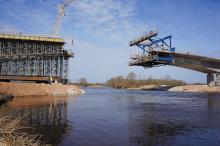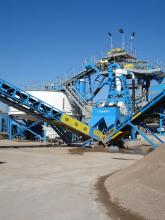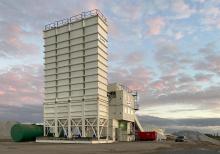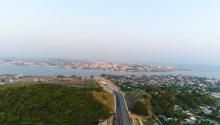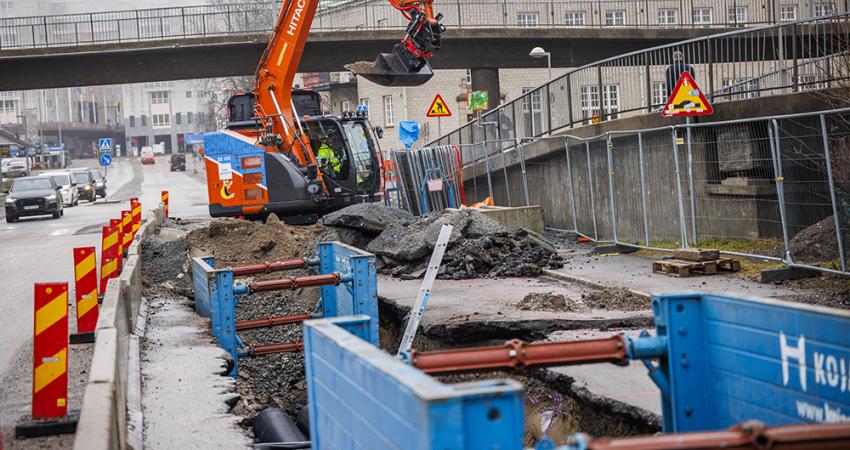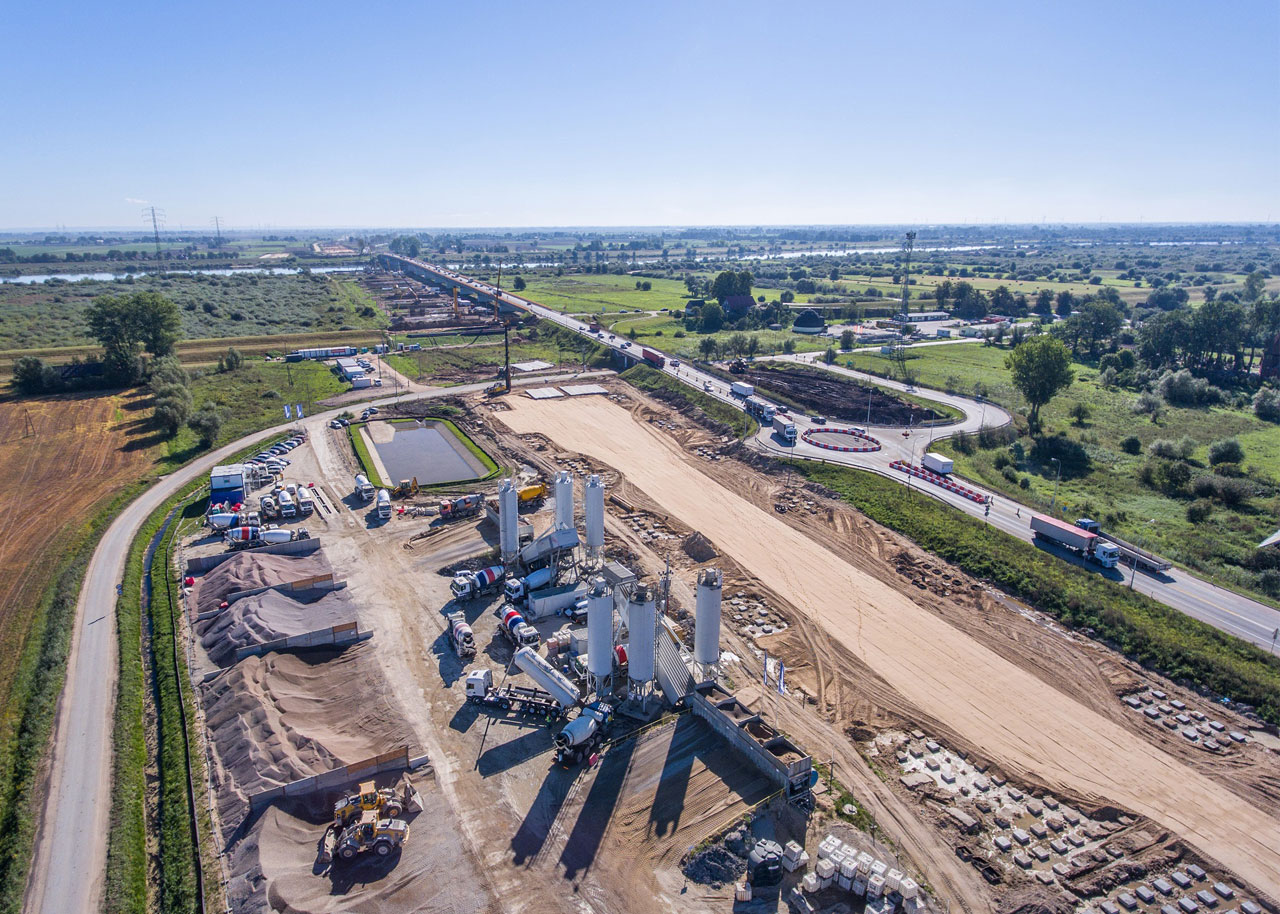
Concrete producer
In all over 400,000m3 of concrete is being supplied by CEMEX for the highway, with the material being used to build civil structures such as flyovers and bridges as well as drainage.
An important part of the S7 highway project is the construction of a 920m bridge that spans the Vistula River. This bridge is on the stretch of highway joining Koszwaly to Nowy Dwor Gdanski in the north of Poland. The construction of the bridge is challenging from a technical viewpoint however as the ground conditions are poor. The underlying soils are not well suited to supporting large civil structures and have to be firstly cleaned before ground support could be installed. The bridge structure is supported by concrete piles, with the material being supplied by two mobile batching plants located close to the site of the bridge.
The two plants were able to supply 1,500m3 of concrete/day on average and up to 2,500m3 of concrete/day at peak periods. For the duration of the project CEMEX is supplying 410,000m3 of concrete in all, as well as in excess of 1 million tonnes of aggregates.
Several technologies were utilised for the bridge construction portion of this highway project. The bridge beams were slid out from the side of the river onto the bridge supports. Additional concrete was then used, with a high-quality architectural grade being utilised for the exposed surfaces so as to maximise the bridge’s aesthetics.
The construction work faced other challenges too, including tough winter conditions as well as high water levels because of melting snow at the beginning of the year. This posed issues due to partial flooding of the area around the bridge, although it had been anticipated and the construction team had planned accordingly.

